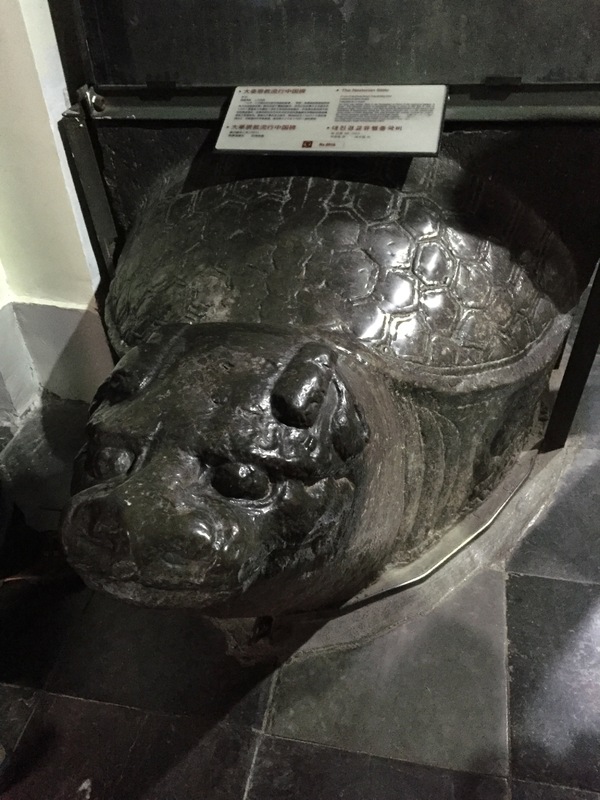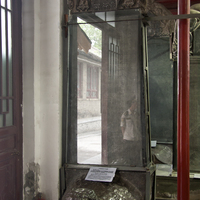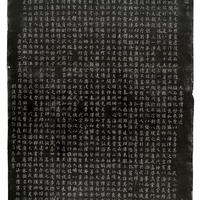"Nestorian" stele
Date:
781
Location or Findspot (Modern-Day Country):
China
Dimensions:
279 cm tall
Description:
This so-called Nestorian stele, also called the Xi'an Stele, was erected in 781 and recounts 150 years of Christian history in China (from ca. 635 until 781). At the top of the stele, among swirling clouds, is a cross on a lotus flower, an adaptation of Buddhist iconography in which the lotus pedestal serves as the seat of the gods. The stele's text is written in traditional Chinese characters with some Syriac glosses. It documents the arrival of Christians at the Chinese capital of Chang'an (now Xi'an) in 635, during the Tang dynasty. These Christians belonged to the Church of the East, often called Nestorian Christianity, which takes its name from Nestorios, bishop of Constantinople (d. after 451). They arrived in China in the seventh century with a missionary named Alopen. The stele describes how Alopen and his fellow missionaries came from Daqin (literally "great Qin," most likely Byzantine Syria). The stele may have been buried in 845, a period of anti-Buddhist persecution that affected Christians, Zoroastrians, and others. It was not rediscovered until the seventeenth century.
Relevant Textbook Chapter(s):
4
Repository and Online Resources:
• Visit Fordham University's Internet History Sourcebooks Project for a translation of the stele's text.
Image Credits:
Wikimedia Commons; Linda Safran
Tags:
Christian,
East Asian,
Connections to the past,
Syriac






